The best water shoes 2025: gear up for wild aqua adventures
Riverbeds, rocks, rapids, reefs, rudders... the best water shoes to protect your feet from blue-space hazards
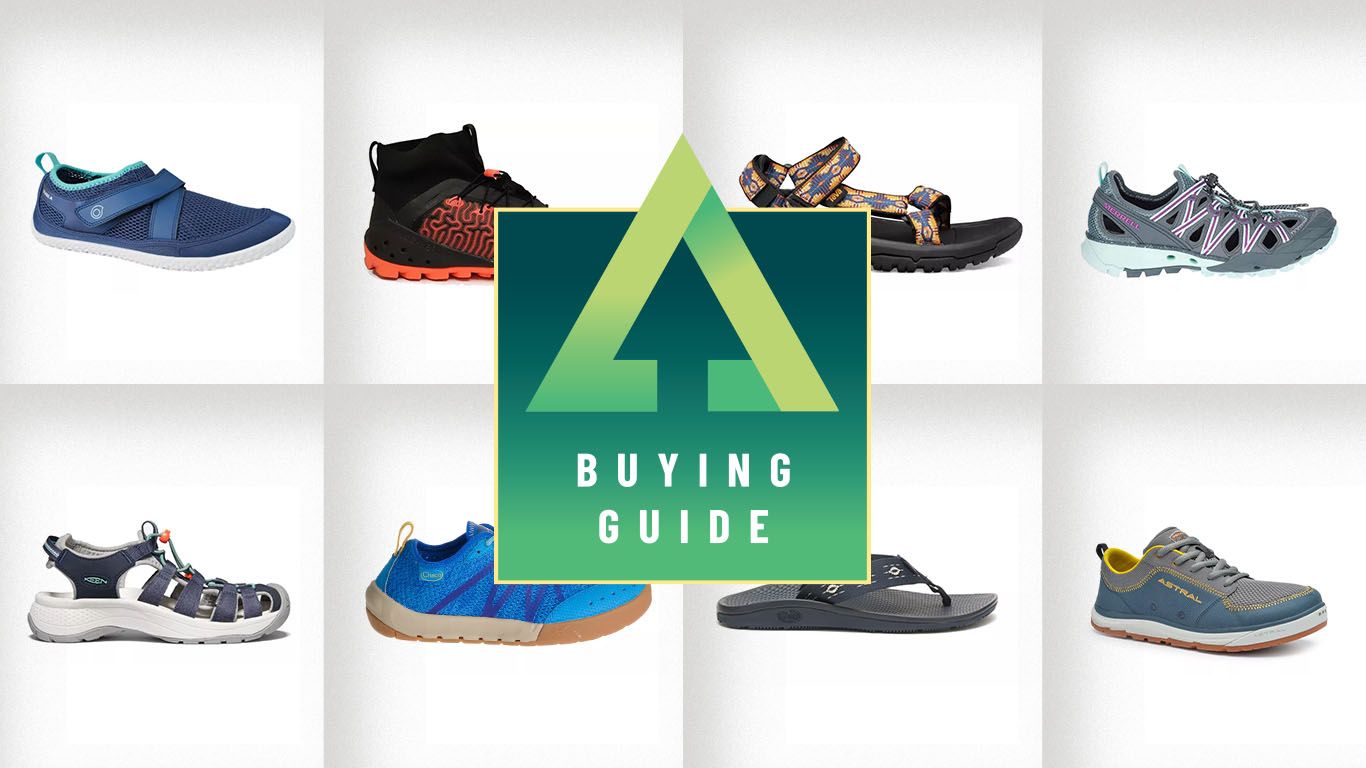
If you’re a summer adventurer who enjoys amphibious escapades, you’ll love this collection of the best water shoes. Designed to be fast drying, protective and uber-grippy, they're great to have in your outdoor armory, along with a pair of the best hiking sandals.
Whether you're into kayaking, coasteering, canyoning, exploring waterfalls, wild swimming, enjoying SUP or simply exploring your local beach and its rock pools, there will be a pair to suit your needs. Here we've gathered the top choices for every kind of water sport.
From neoprene booties to synthetic shoes that share features with the best hiking shoes, water shoes come in many shapes and styles. The former are best for wild swimming, SUP and kayaking, while the latter are a great option for beach walks and the cocktail bar.
We've taken to the water for a variety of activities and many different settings to collate this guide to the very best water shoes. Stash a pair in one of the best dry bags, along with a warming changing robe, and head to the coast.
The quick list
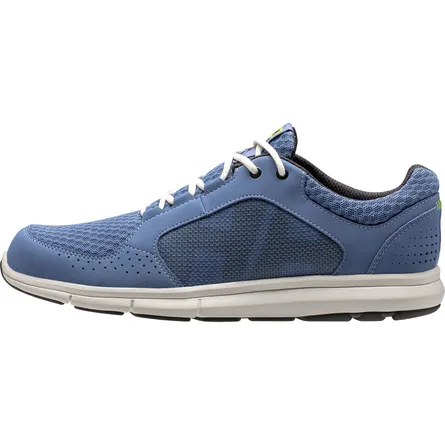
Practical, lightweight, and good looking, this water-loving sneaker is a great choice for boating.
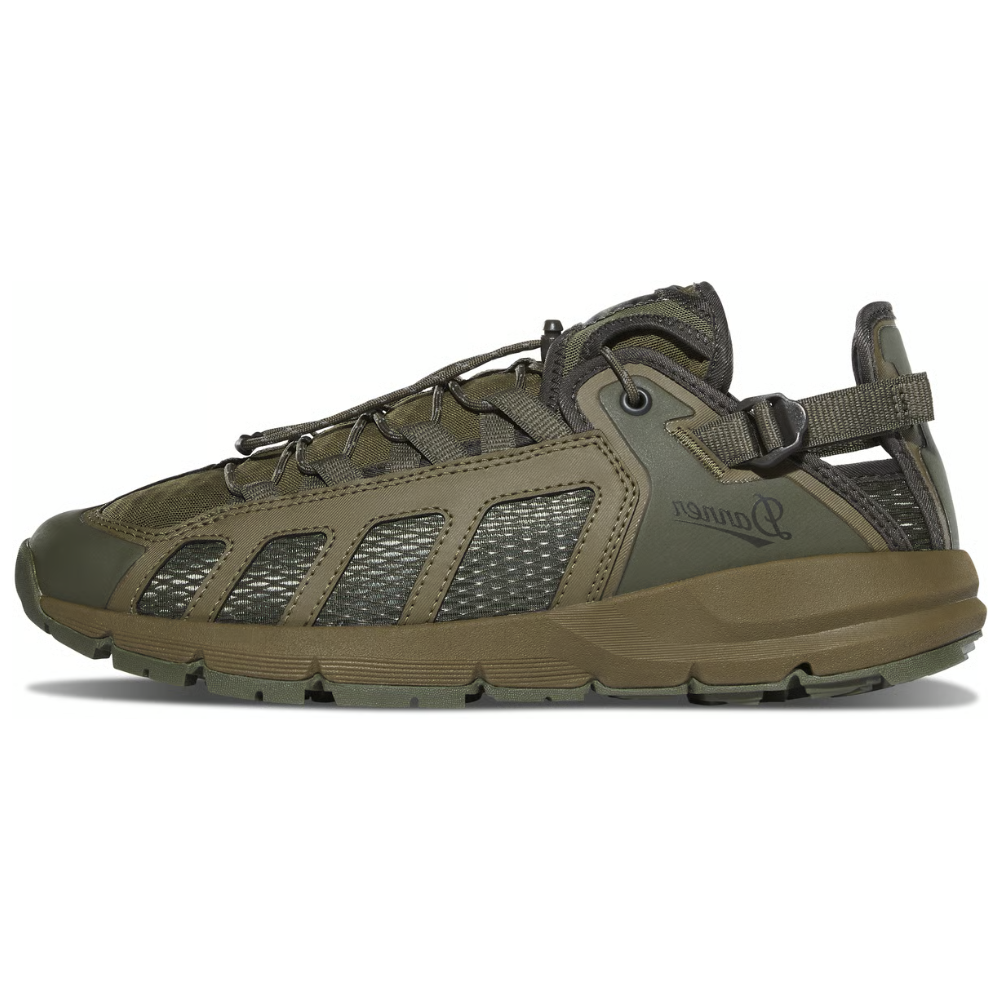
We love this minimalist take on Danner’s Fullbore boots. They give solid protection for your feet while the breathable leather-mesh upper lets water drain quickly: ideal for fairy challenging summer hikes and turbulent watersports.
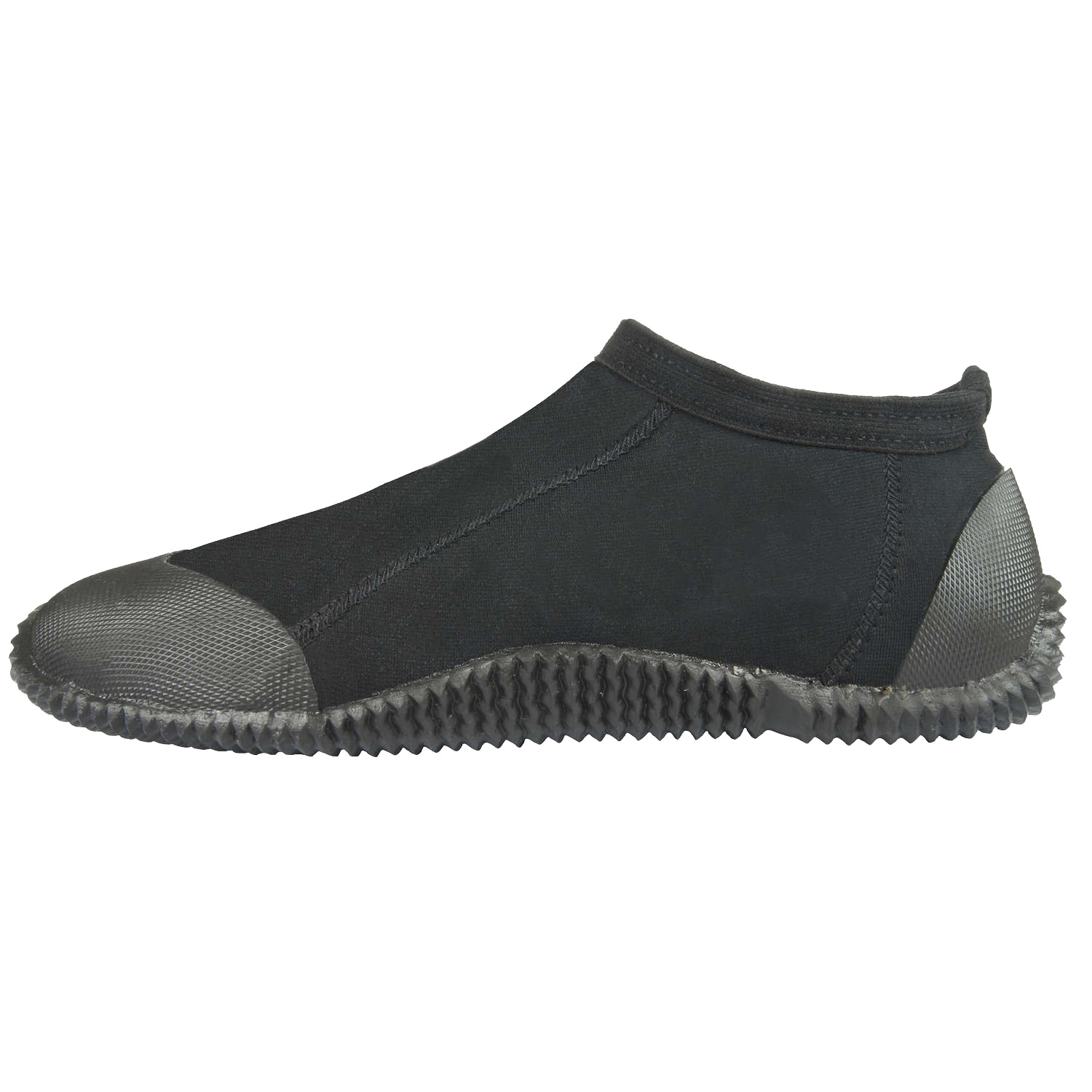
Attractively priced, no-frills but very functional wetsuit-style booties for three-season-plus coastal capers and paddling adventures on SUPs, and in kayaks and canoes.
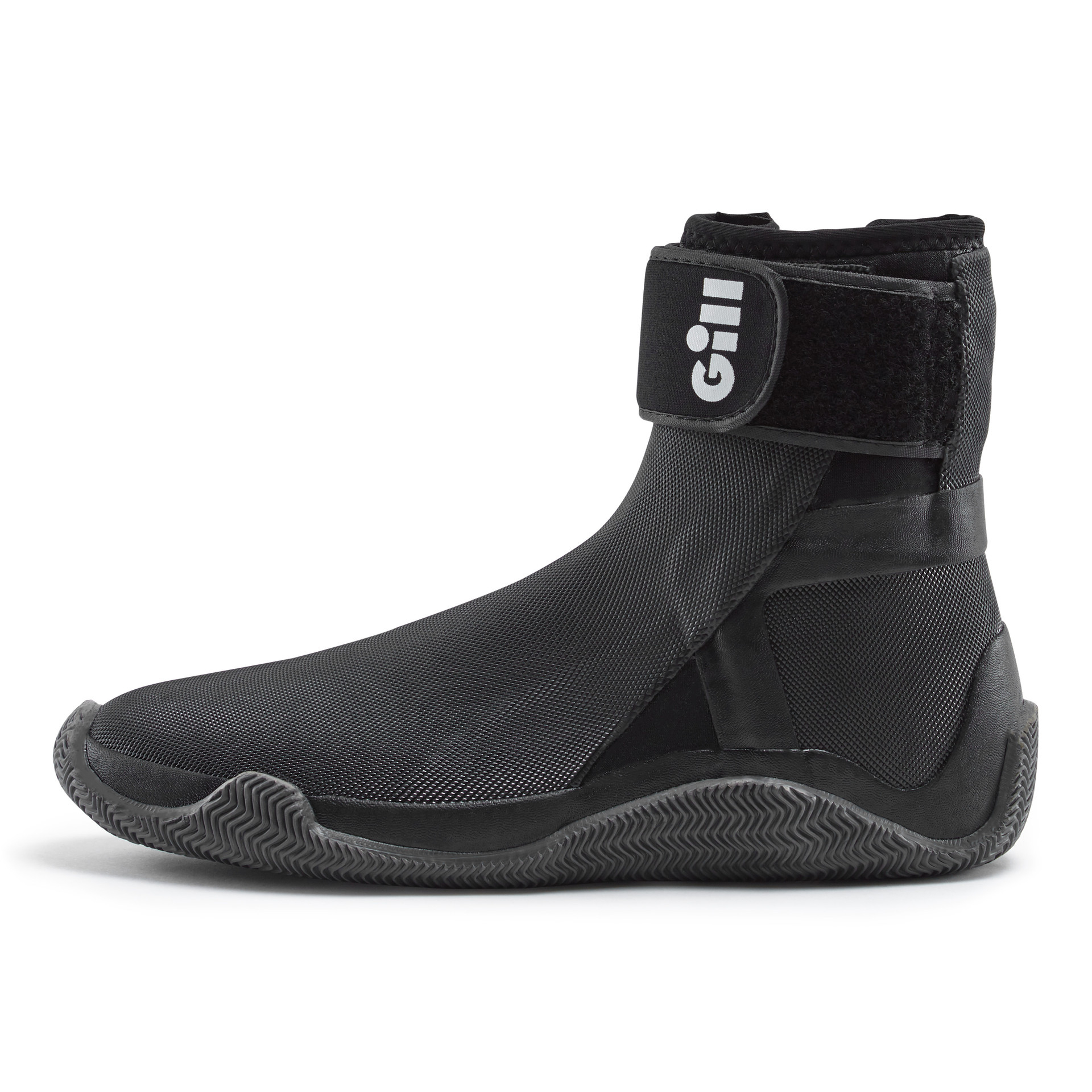
Warm and tough enough for kayaking, canyoning, canyoning and gorge scrambling all year round.
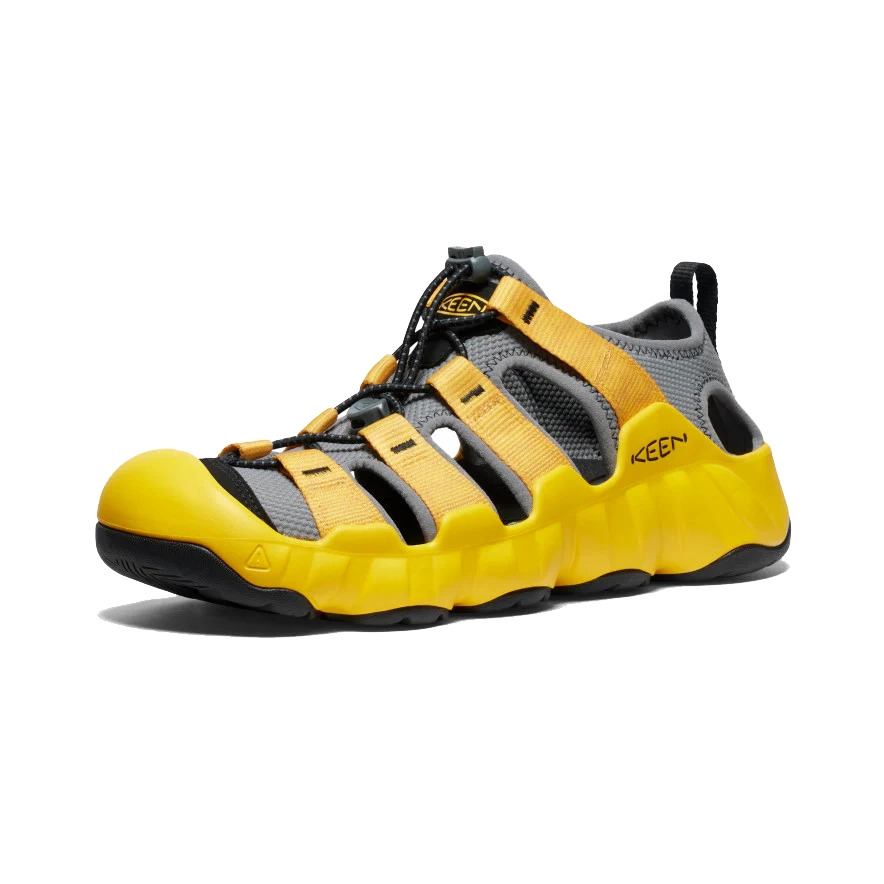
The Keen Hyperport H2 is a bouncy water shoe that'll see you through easy hikes, coastal wanders, rock pooling and fun swims. Our tester was a fan of the sturdy protective toe bumper and found them light and comfortable to wear.
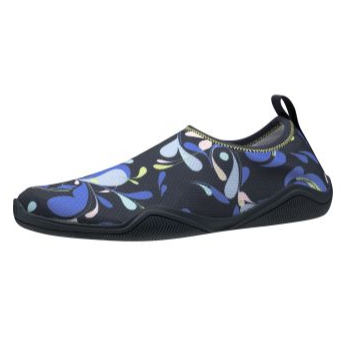
Great for slippery rocks and boat decks, this light, packable water shoe provides excellent grip. It's affordable too.
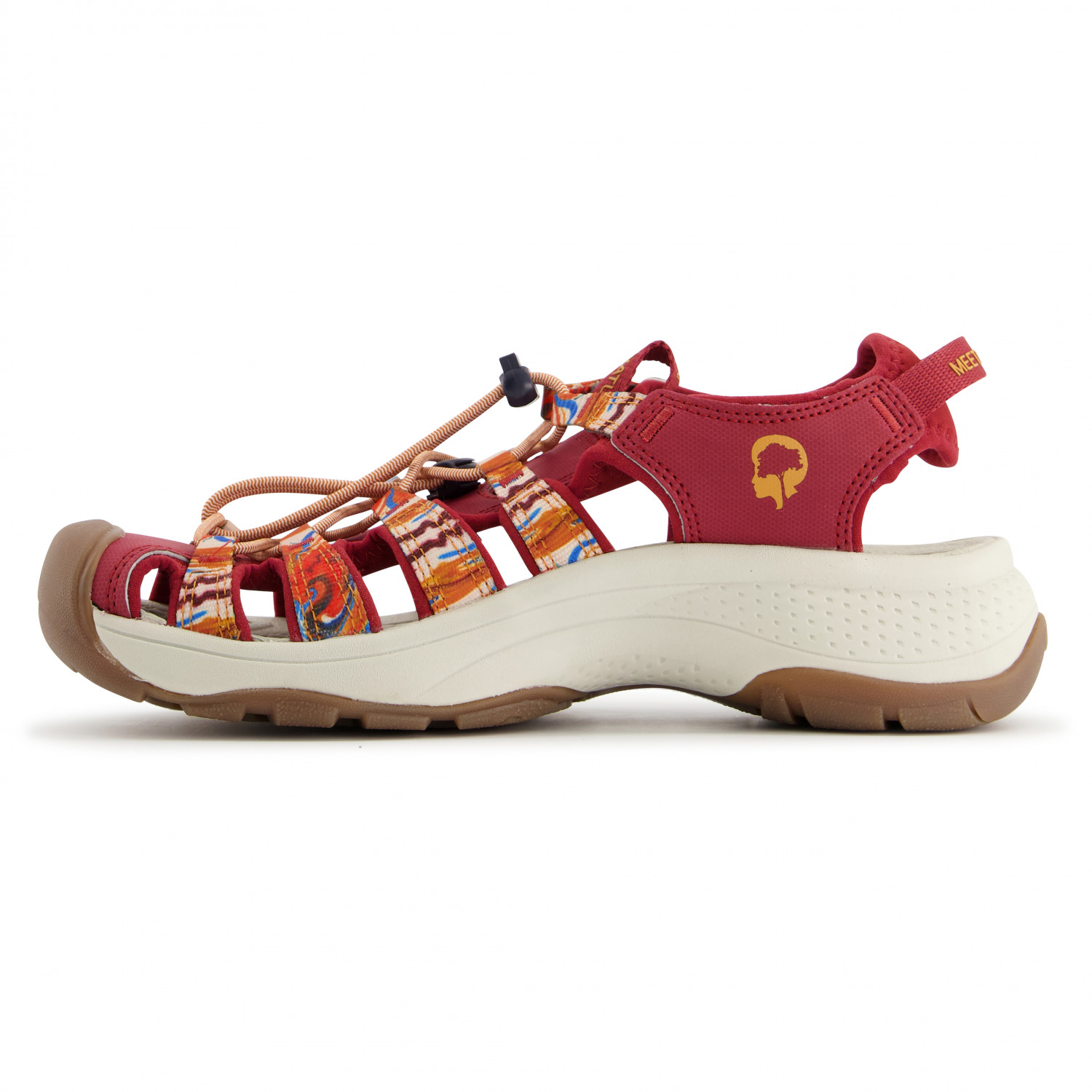
Super cushioned, with a tough toebox to protect against rocks and an extra sticky sole.
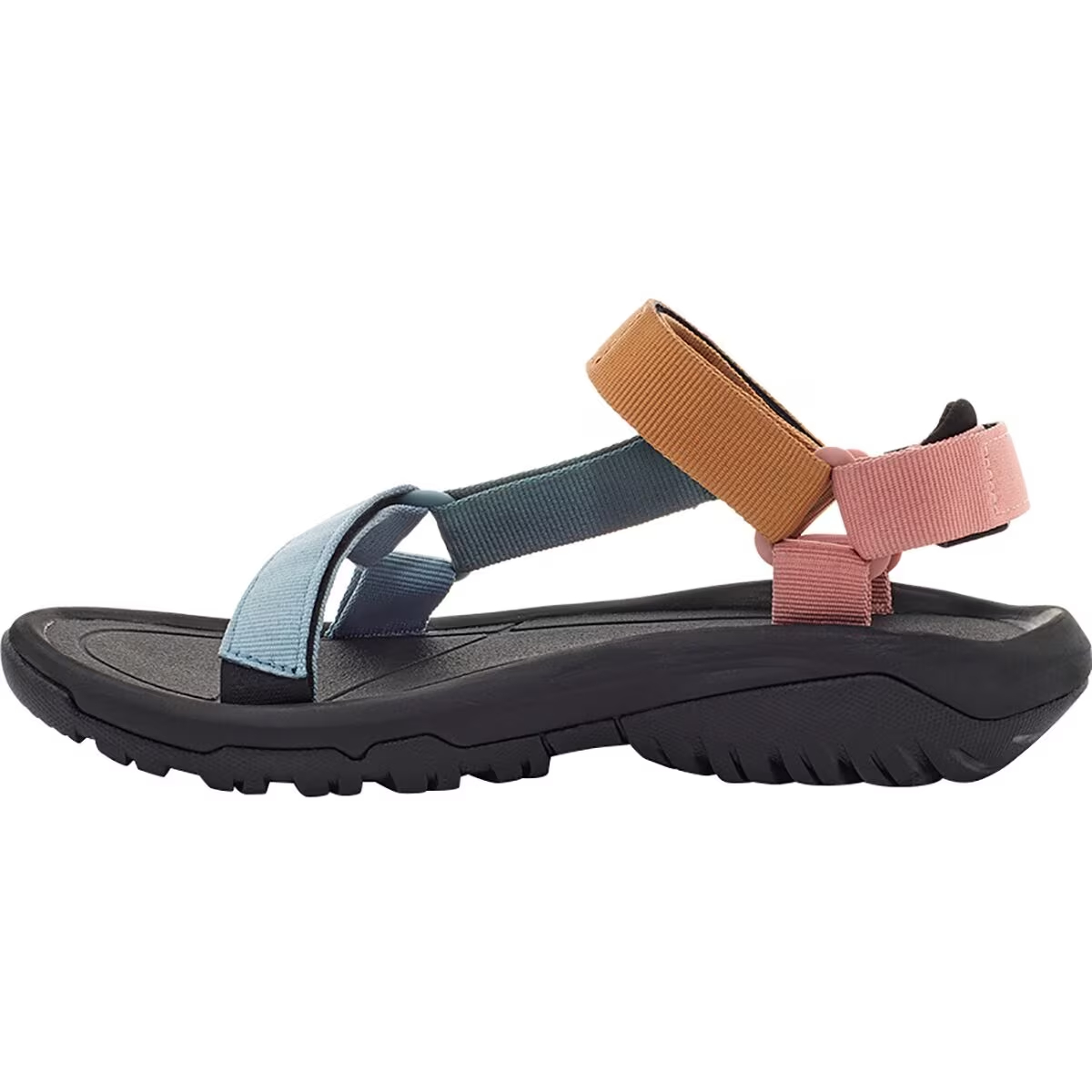
A classic design that's mainly made for land, but also handles the occasional watery encounter well.

A water shoe with swimrun and trail pounding capabilities, this is a fast-draining barefoot model with plenty of traction, and a shape that will help rather than hinder when swimming.
The best water shoes comparison table
Shoe / Sandal | Price | Style | Weight |
Helly Hansen Ahiga V4 HP Sneakers | $110 (US) / £95 (UK) | Water shoe | 11oz / 310g |
Danner Fullbore Sandals | $160 (US) / £125 (UK) | Water shoe | 12.2oz / 346g |
Lomo 3mm Wetsuit Booties | £17 (UK only) | Wetsuit bootie | 12.3oz / 350g |
Gill Marine Edge Boots | $95 (US) / £76 (UK) | Water shoe | 22oz / 620g |
Keen Hyperport H2 | $120 (US) / £95 (UK) | Sandal / shoe hybrid | 12.17oz / 345g |
Helly Hansen Crest Watermoc | $60 (US) / £45 (UK) | Water shoe | 5.4oz / 153g |
Keen Astoria West | $130 (US only) | Sandal / shoe hybrid | 14oz / 400g |
Teva Hurricane XLT2 | $80 (US) / £70 (UK) | Sandal | 16oz / 450g |
Vivobarefoot Hydra ESC | $210 (US) / £170 (UK) | Swimrun shoe | 10.9oz / 310g |
The best water shoes we recommend in 2025
You can trust Advnture
The best water shoes overall
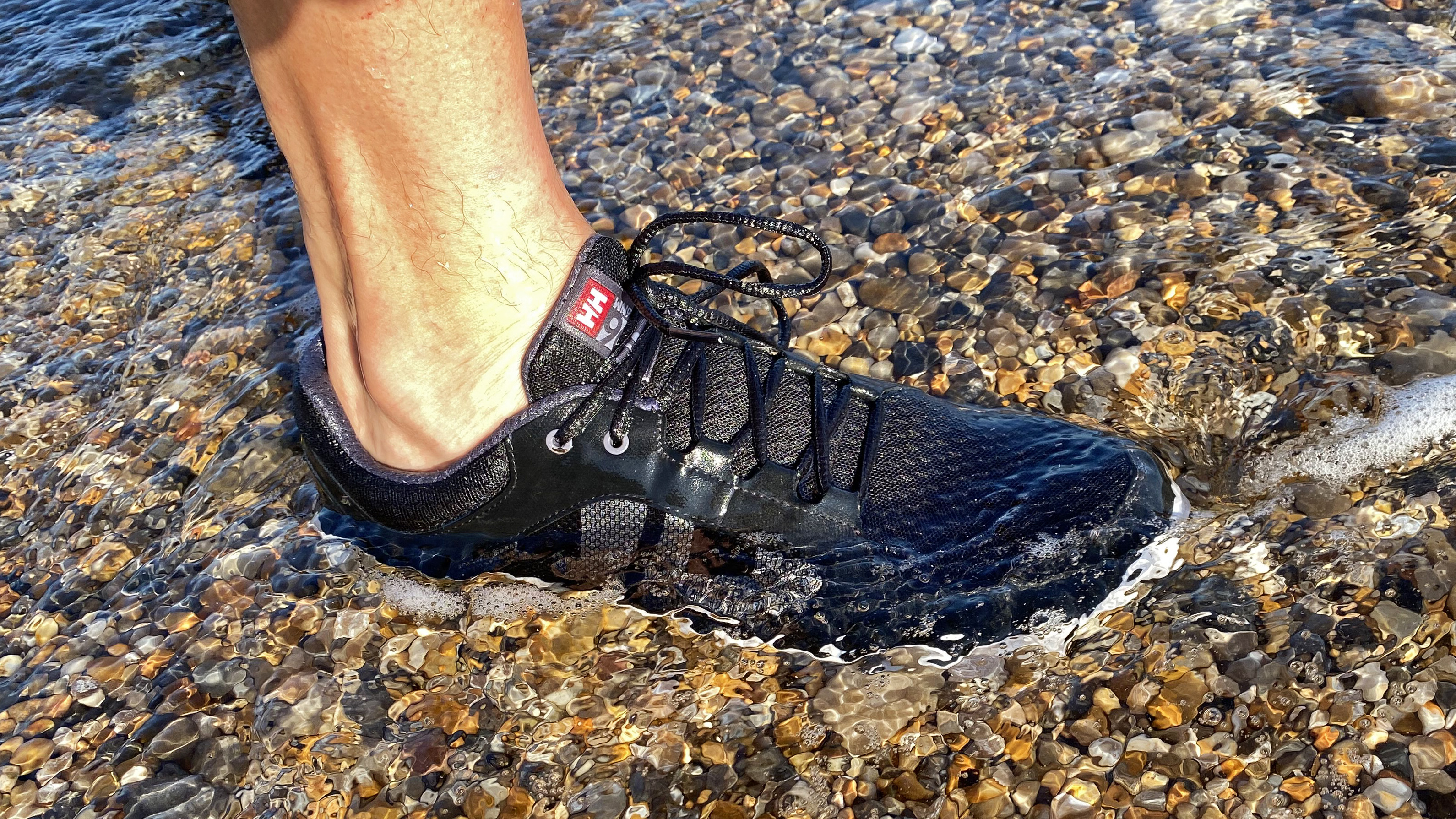
Specifications
Reasons to buy
Reasons to avoid
The Helly Hansen Ahiga V4 HP are sleek, lightweight deck shoes that are ideal for boating, beaches, and bars. Lightweight and with out-the-box comfort, they are among the best water shoes available.
Their breathable mesh uppers drain and dry quickly, and they have an odor-resistant treatment to keep them as fresh as possible. EVA foam midsoles give great support, while grippy outsoles ensure traction. You get a snug, secure fit thanks to the lace eyelets, which extend to the top of the tongue.
Advnture consulting editor and sea lover Pat Kinsella tested the Ahigas during a mid-winter sailing trip when torrential rain and stormy conditions provided a white-knuckle ride. He said: "There seemed to be almost as much water in the air as there was in the sea at times, and the deck was drenched all day long. Moving around felt precarious, but the grippy Ahiga V4 HP sneakers enabled me to keep my footing throughout the adventure."
While not ideal for kayaking or paddleboarding, when it comes to yacht trips, rocky walks and seaside strolls, Pat reckons these shoes shine. They are PVC-free and contain recycled materials.
Read our full Helly Hansen Ahiga V4 HP Sneakers review
The best water shoes for hiking
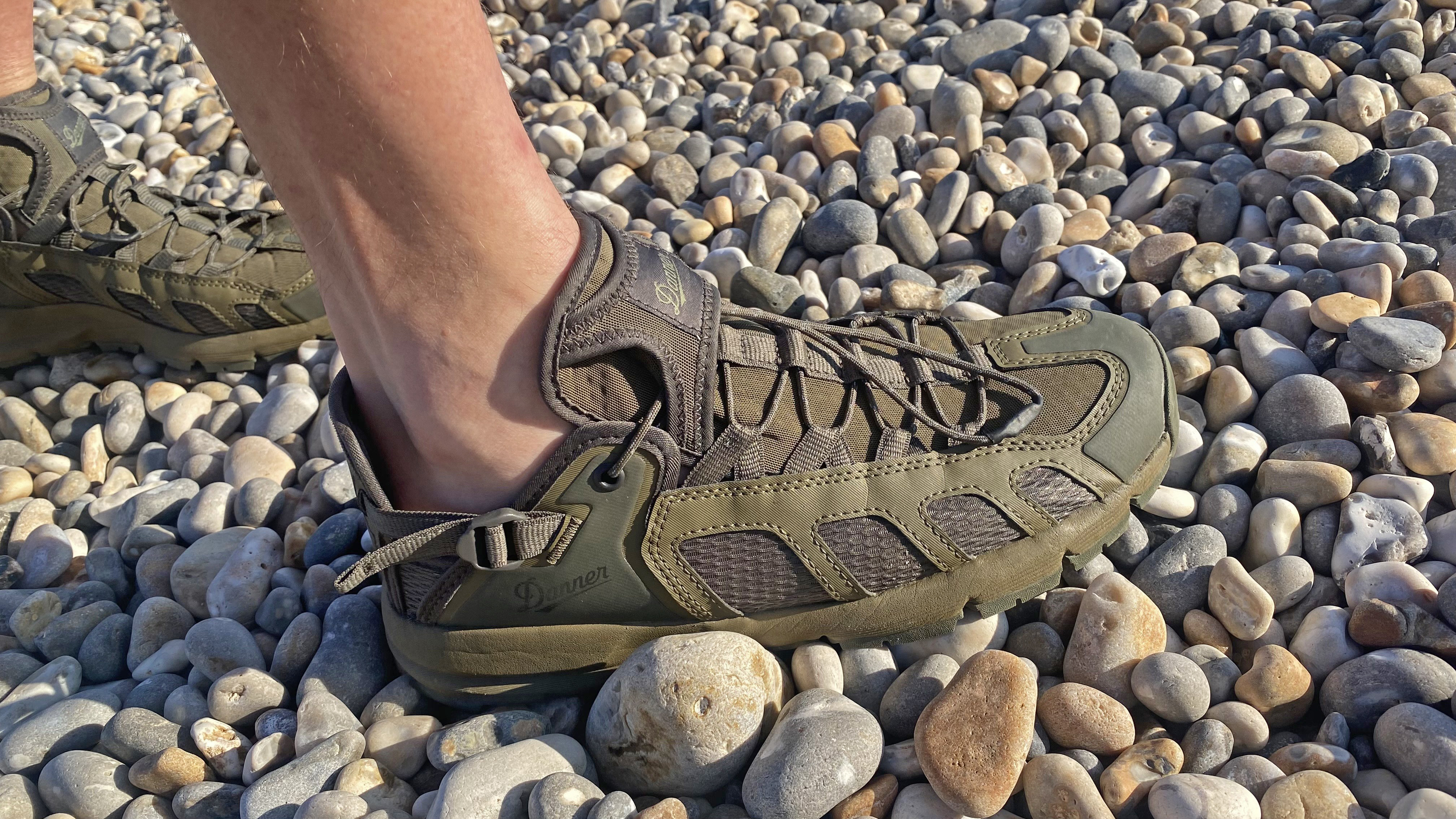
Specifications
Reasons to buy
Reasons to avoid
Despite always prioritizing function over fashion when it coms to outdoor gear, our expert tester Pat Kinsella has struggled in the past to find hiking sandals that he loves the look of, finding them mostly "fuggly". However not the Danner Fullbores. "They looked immediately decent enough to wear from the trails to the beach to the bar," he said.
Built on a stripped-back version of Danner’s Fullbore tactical boots, these sandals combine a Vibram Megagrip outsole and a breathable mesh-leather upper. Inside, there’s a removable OrthoLite footbed on top of a Plyolite midsole, which gives ample cushioning for fairly long hikes on mixed terrain. The fit is secure thanks to a padded heel with adjustable buckle and an easy lacing system with toggle.
The tongue isn't integrated into the shoe's chassis, which does let in grit and could have caused the rubbing and initial discomfort Pat experienced. However, after a period of breaking in the Fullbores became comfy enough for long hikes.
The Vibram sole excels in wet and dry conditions, with adaptive lugs and flex lines that let you grip uneven surfaces. There's solid toe protection and great drainage from the mesh uppers, making them ideal for water crossings.
In fact, these sandals strike a fantastic balance: rugged enough for trail use, breezy for summer heat and water sports, and they're good looking enough to wear for social meets.
Read our full Danner Fullbore Sandals review
The best water shoes for SUP
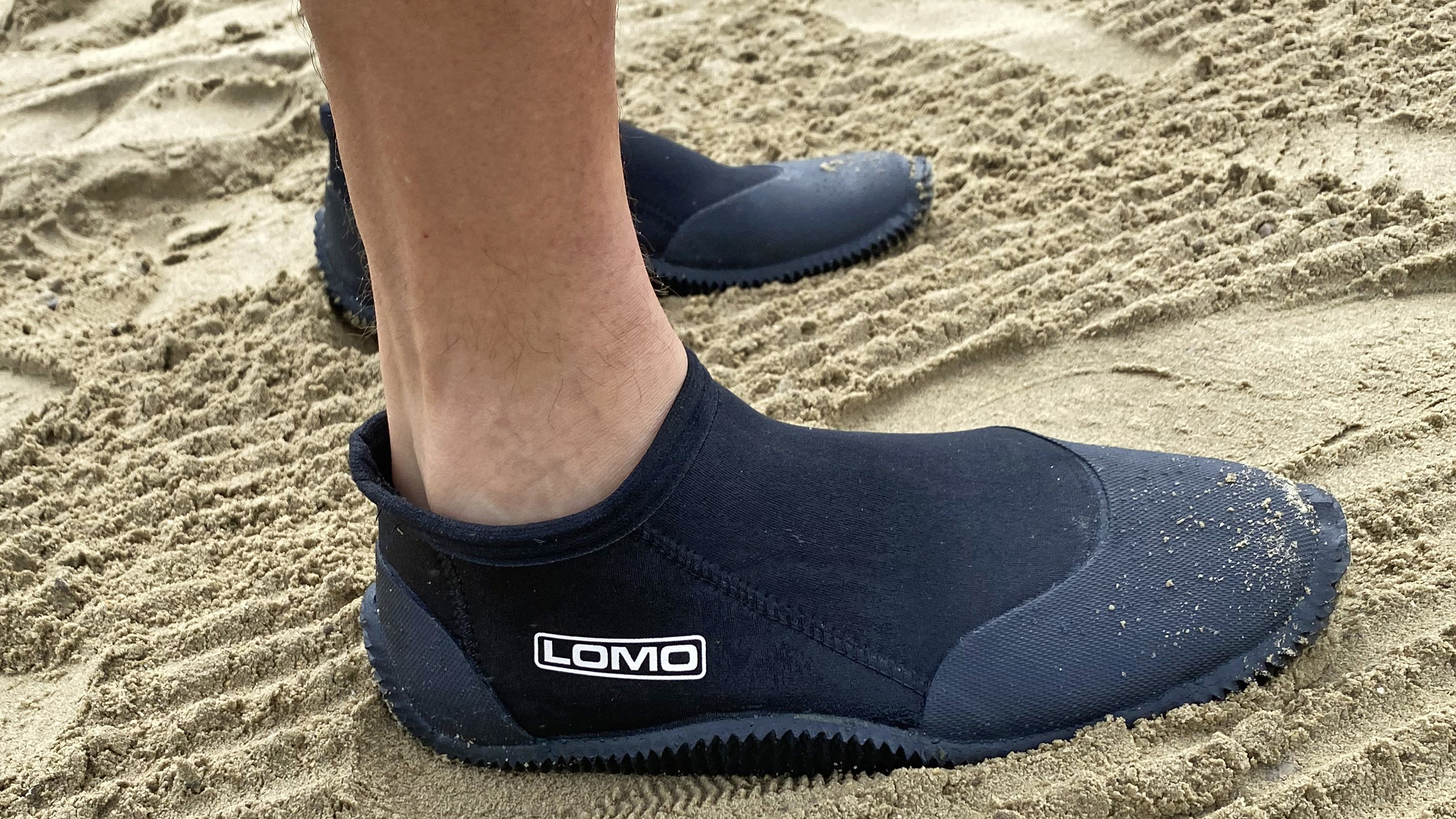
Specifications
Reasons to buy
Reasons to avoid
If you want a pair of no-nonsense water shoes, these from Lomo are ideal for use on the coast and along riverbanks and lake shores as the summer heat wanes. They are great for swimmers, beach explorers and paddlers looking for coverage and thermal protection for their feet.
With a great low price point, these mid-height booties have a sturdy outsole that will guard against submerged objects, such as broken shells, sharp rocks and sticks.
A series of pronounced ridges give fantastic grip, even on weed-covered rocks and slimy slipways. The outsole also reaches up the back of the heel and across the front of the toes, preventing stubs and other knocks. You've got a little extra protection on the delicate ankle area too, thanks to the high cut of the cuff.
Expert tester Pat Kinsella wore them kayaking, stand-up paddleboarding, wild swimming, and casual beach trips. He's a huge fan, appreciating their thermal properties as fall temperatures dipped.
He said: "It’s not just the thermal protection offered by these booties that makes them brilliant; the grip on the outsole is among the best I have ever encountered on any kind of water shoe."
Overall, these Lomo water shoes are a great choice for people who like to play in and around the water in the summer and shoulder seasons.
Read our full Lomo 3mm Wetsuit Booties review
The best water shoes for protection
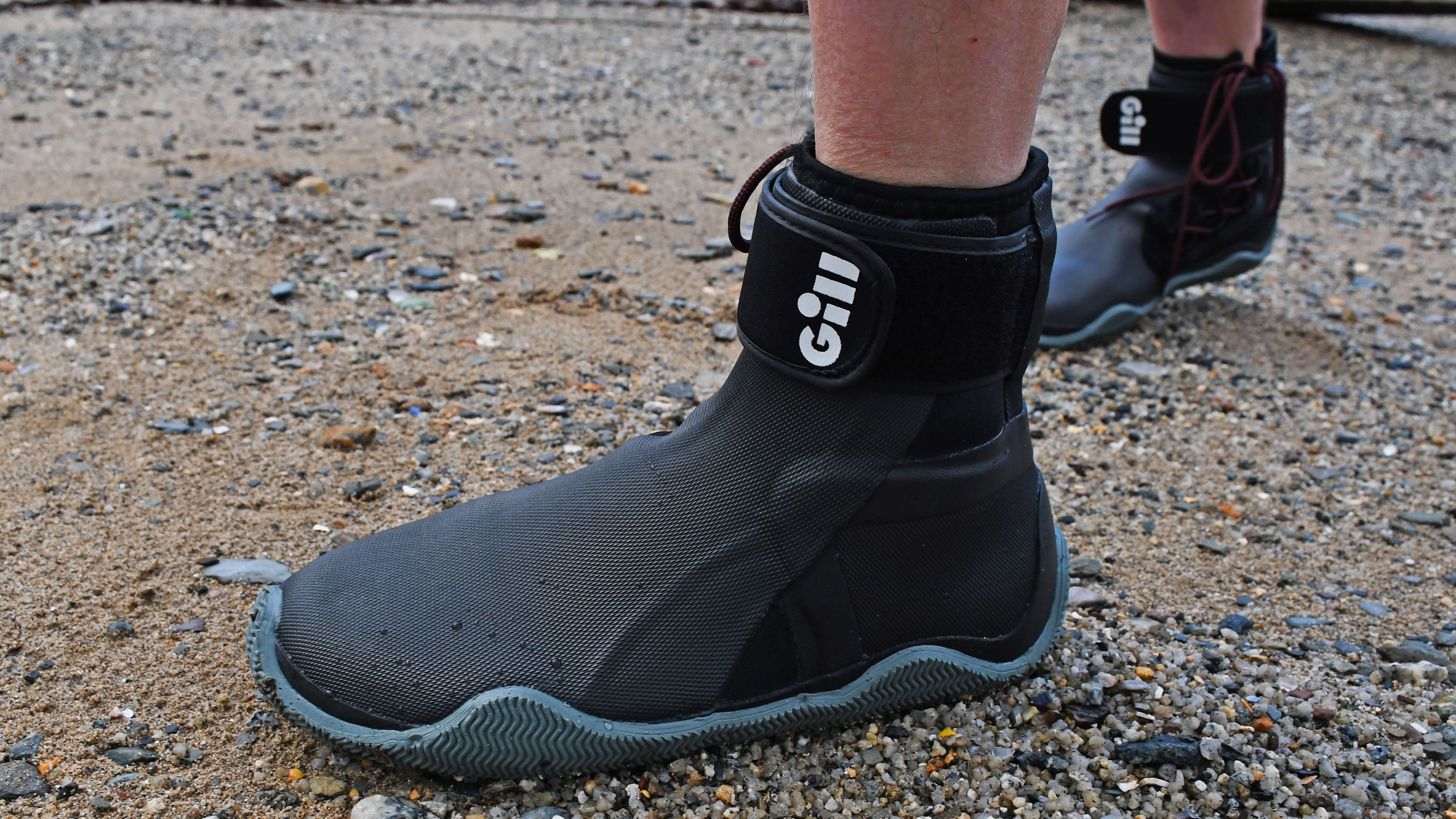
Specifications
Reasons to buy
Reasons to avoid
Made almost entirely from neoprene that's 0.16in (4mm) thick, the Edge boots are flexible, warm and tough footwear for all manner of marine adventures throughout the entire year. The protection and grip offered by the sturdy outsoles is superb, and beyond beaches, boats and boards they are also ideal for inland outdoor activities around waterways, including all forms of kayaking and canoeing, plus canyoning and gorge scrambling.
The boots are cut on the lower shin, meaning your entire foot is shielded from knocks and scrapes from sharp coastal objects and bulky water equipment. They have heel, toe and bridge support built into the sole, which makes them comfortable as well as protective.
The only thing that expert tester Pat Kinsella thought was a little overkill was the dual system of laces used to secure the boots. "The laces are ridiculously long and end up tied in huge hoops (but you can tuck them under the Velcro band)," he said.
Overall, though, he thought the boots were great. "While they are a fairly pricey investment, the excellent construction quality means they should last for quite a few years, even if you subject them to some serious salty shenanigans."
Read our full Gill Marine Edge Boots review
The best water shoes for coastal hikes
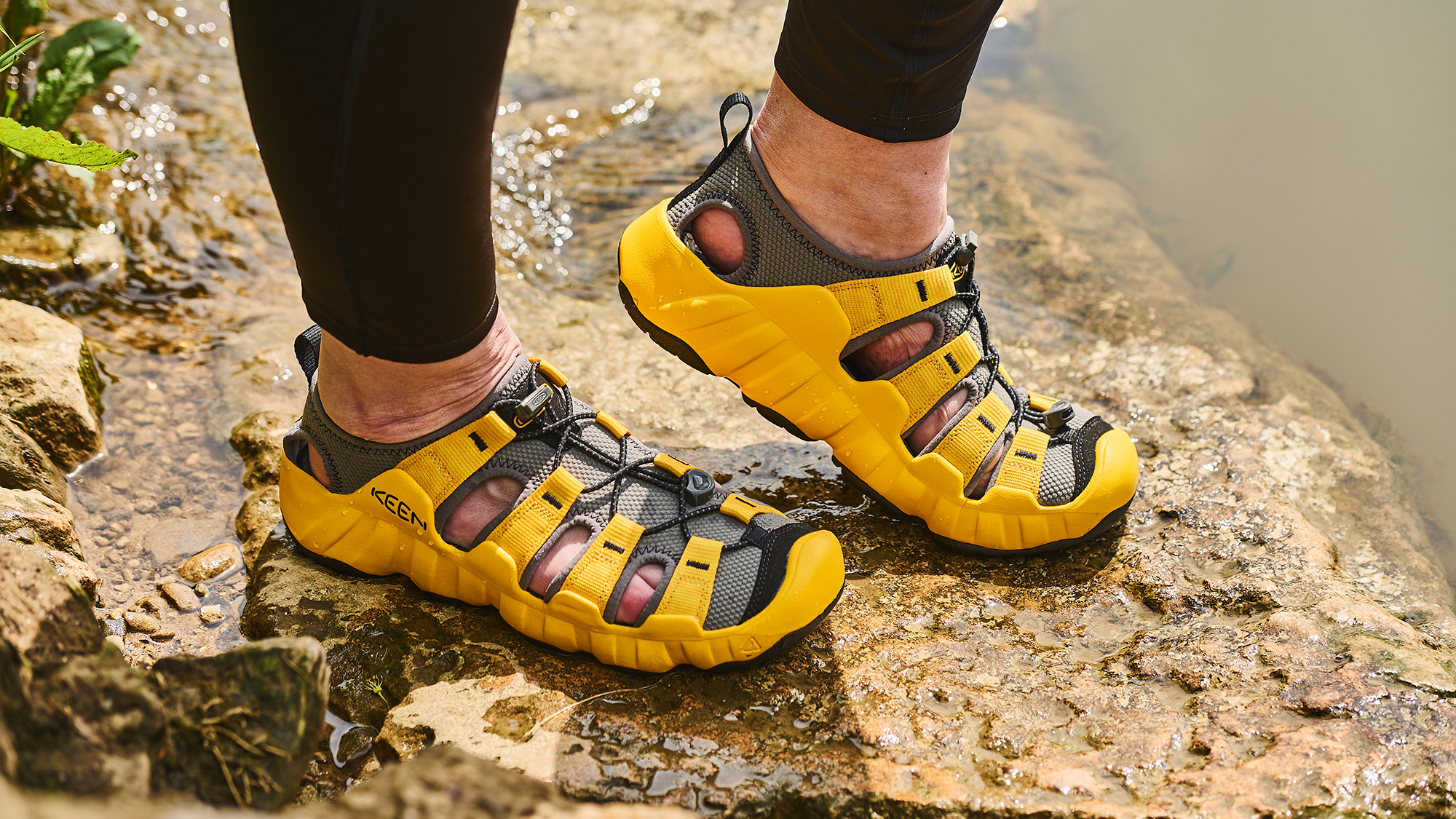
Specifications
Reasons to buy
Reasons to avoid
The Keen Hyperport H2 is a shandal designed to take you from coastal hikes to the beach without needing to change footwear. Built around a super bouncy foam-injected midsole, this is a water shoe that will put a spring in your step. Thanks so the polyester-knit and webbing upper and substantial toe bumper, it also provides a decent amount of protection against trail debris and obstacles, although obviously not as much as the best hiking shoes.
The Hyperport isn't the best choice for long swimming sessions. Its chunky shape creates a significant amount of drag in water, so it's better suited to casual swimming and wading than extended swim training. Where it really comes into its own is for those days when you're wandering cliff paths with a plan to hit the waves later.
The thick sole (the heel is 1.77in (45mm)) makes it a great choice for walking on the beach, and the multi-directional lugs on the sole do a good job of gripping on slippery surfaces. "You get a significant amount of protection for not a great deal of weight and can wade across a rocky seabed or riverbed without worrying about hurting your feet," says expert tester Rosee Woodland.
She reckons the Hyperport H2 would work for paddle boarding for people with good ankle and knee flexion, as the extra height of the sole makes it a little more challenging to stand up onto an unstable surface than if you were wearing a flatter water shoe.
Read our full review of the Keen Hyperport H2
The best water shoes for scrambling
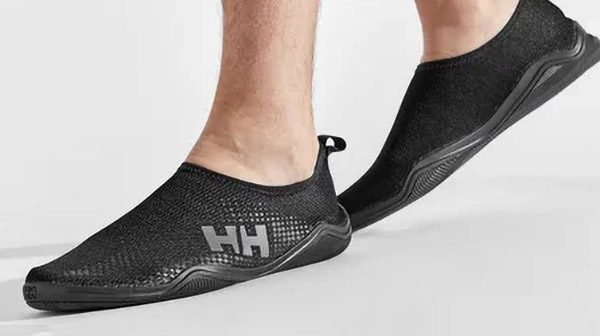
Specifications
Reasons to buy
Reasons to avoid
Lightweight and quick to dry, the Helly Hansen Crest Watermoc is a slipper designed for aquatic adventures. There's a bit more to it than first meets the eye – a flexible rubber outsole for grip and a breathable mesh upper that’s cut tight to keep out shoreline debris. .
The shoes are cut low and free from fastenings such as Velcro straps or laces that could get caught in windsurf or boat rigging, or that could cause pressure points if you're kneeling or using foot harnesses of any kind.
The soles are siped (cut with thin splits) for top traction on smooth and slippery surfaces such as wet rocks or polished boat decks. And they are tough enough to save your feet from coral and submerged junk.
Expert tester Berne Broudy said: "The elasticized opening was easy to get into when I held the heel tab. And once they were on, the Crest’s thin midsole made them feel more substantial than a sock, and less cumbersome than a shoe, with the structure to stay on my foot whatever I was doing."
With more protection than bare feet but light enough not to weigh you down, the Crest Watermocs are a great buy. They run large, Berne reveals, and suggests dropping down half a size when ordering.
Read our full Helly Hanson Crest Watermoc review
The best water shoes for rock pooling
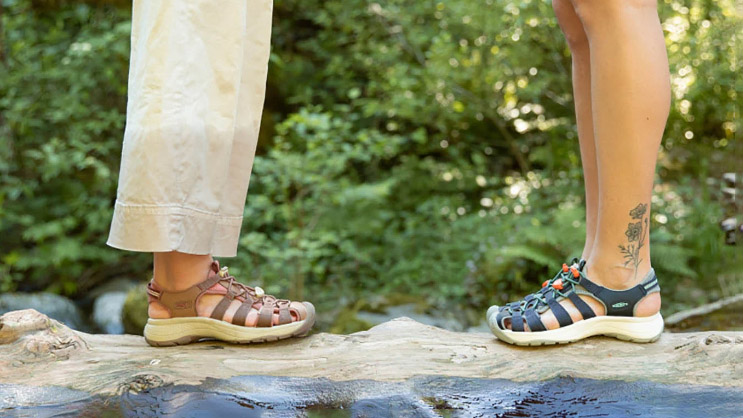
Specifications
Reasons to buy
Reasons to avoid
Keen’s hiking sandals are deservedly popular with walkers, and we’ve yet to review one of their summer shoes we didn’t like. One of our top picks is the female-specific Astoria West.
Designed to go from trail to town to waterfront, the Astoria Wests stood out on test for the walking comfort they offer. Oversized but very cushioned soles make the sandals feel barely there, despite their middling 400g weight. Expert tester Sian Lewis likes the close-fitting but comfortable webbing straps, designed to let your feet breathe. They are quick to dry after a soaking, too.
"They have a firm, wide protective rubber toe box that’s brilliant for protecting pinkies if you do encounter rocks both under the water and on the shore, and their ‘Aquagrip’ soles are sticky even on wet surfaces," she says.
All in all Sian rates the Astoria Wests as a good do-it-all summer shandal. However, as the fit is narrow, they might not be the comfy if you have wide feet.
Read our full Keen Astoria West review
The best water shoes for pebbly shores
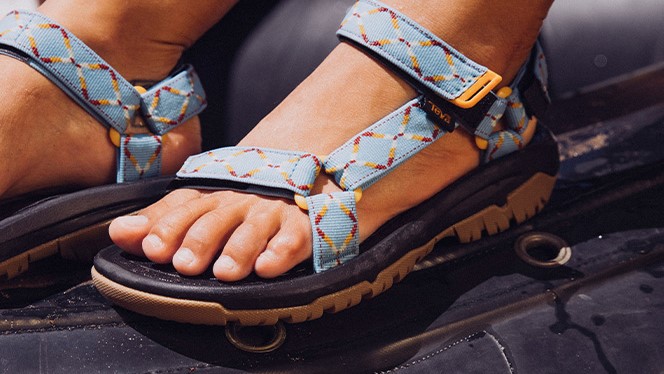
Specifications
Reasons to buy
Reasons to avoid
Teva sandals are a bit of a classic in the outdoor world, and the brand’s more technical Hurricane design is one we find ourselves reaching for again and again for summer days out and travelling in hot climates. We’ve tested these walking sandals out everywhere from river crossings in the Himalayas to hiking the South West Coast Path – they’re definitely built to last.
They are comfy, too. The tough, easily adjustable straps forma T-shape around the foot to give a snug and secure fit while allowing maximum airflow and a feeling of freedom.
The rubber sole is molded to boost ankle support, letting you walk further than in other shoes on test here. In fact, the Hurricanes are more of a walking sandal that you can take into water than an actual water shoe. While they are reasonably weighty, they are quick to dry and grippy on wet surfaces.
Expert tester Sian Lewis says: "These smart sandals come in a range of bright patterned and retro designed straps as well as more subtle colorways, and look great worn casually as well as on the trail and on the beach, making them a decent investment for daily use."
Read our full Teva Hurricane XLT2 review
The best water shoes for swimrun
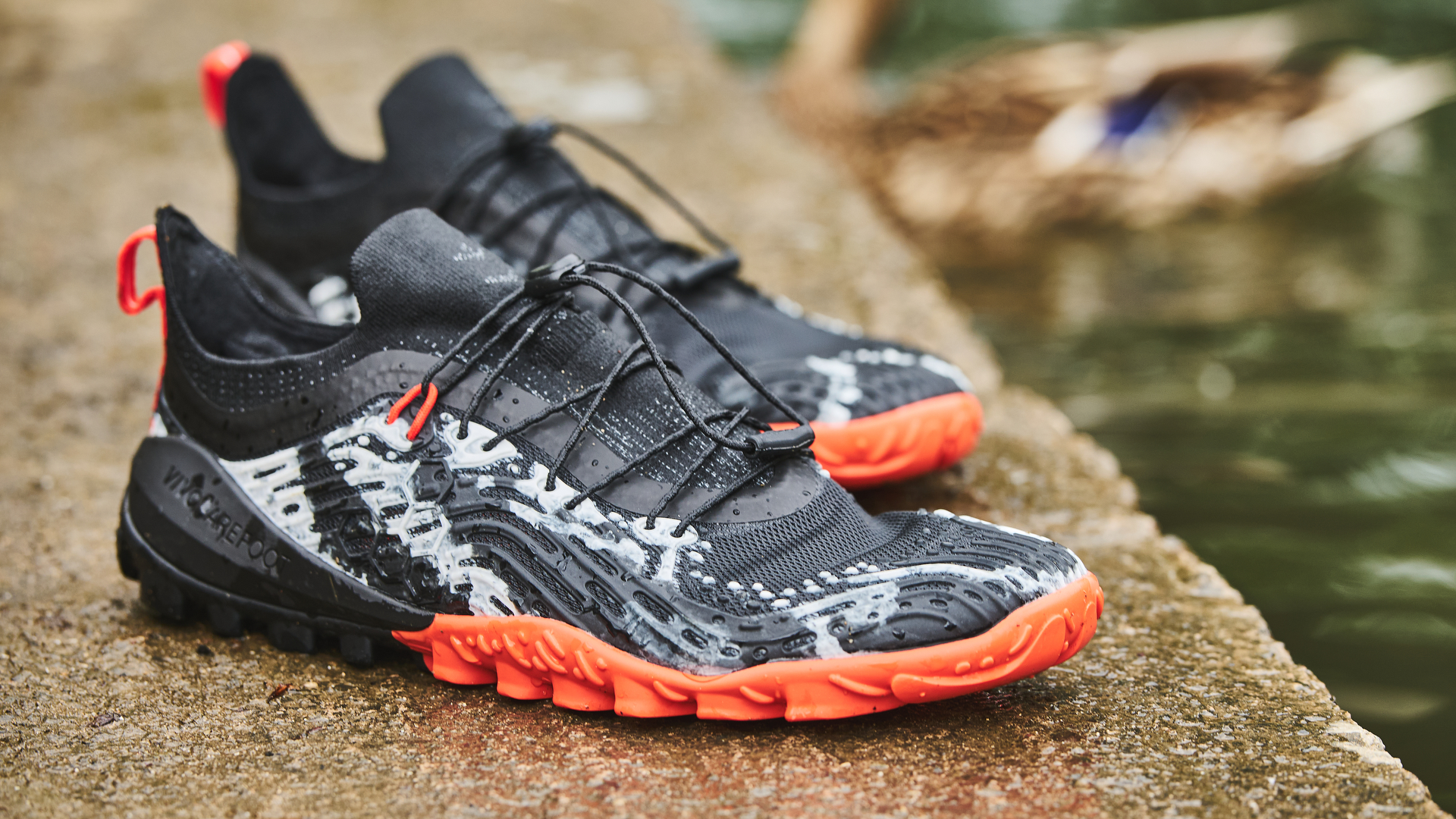
Specifications
Reasons to buy
Reasons to avoid
The Vivobarefoot Hydra ESC is a water shoe designed for the most athletic adventures. Created with input from world-level swimrun teams, this is a shoe designed for those with a competitive streak and it shows.
The Michelin soles are built for trail running, with 0.16in (4mm) multi-directional lugs on top of a minimal 0.08in (2mm) outsole. The outsoles also have a 0.03in (0.8mm) puncture resistant finish and our tester said she found them "reassuringly substantial" - protective against sharp rocky ground while still delivering plenty of trail feel.
These shoes really come into their own when used for swimming. The mesh uppers are fast draining and the classic barefoot last of narrow heel and wide toe box gives an almost fin-like shape, meaning that, while they do create drag just by nature of being on your feet, they also act almost like a mini training fin. They might not make you swim faster but they don't exactly slow you down either.
Our expert tester Rosee Woodland had some concerns about the decision not to put any backing on the lacing system on the inside of the upper. "I keep coming back to this feeling that an extra layer here to cover the laces on the inside of the shoe would add a significant amount of comfort that otherwise feels lacking," she says.
If you're wearing these for anything other than swimming, she recommends wearing socks too.
How we test the best water shoes
Our reviewers test water shoes across varied settings and pursuits, such as wild swimming, rock pooling, coasteering and canyoning. Specific features (including comfort, warmth, breathability, grip, materials used and protection) are tested against claims made by the brand, and we assess factors such as durability, environmental impact and value for money.
Meet the testers
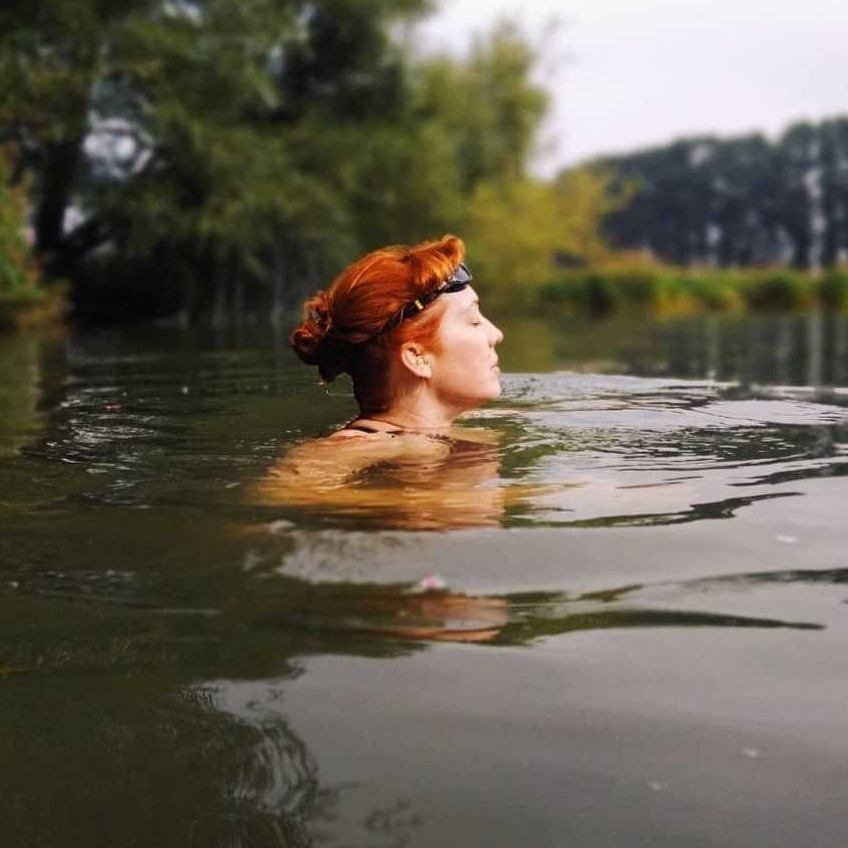
With a background in bikepacking and mountain-bike journalism, Rosee Woodland rediscovered a love for wild swimming ten years ago and is now a veteran of many long-distance river events, including the Dart 10k, which she has swum three times. She is a qualified swim coach, and learned to freedive in Bermuda, where she had a narrow miss with a Portuguese Man O' War.
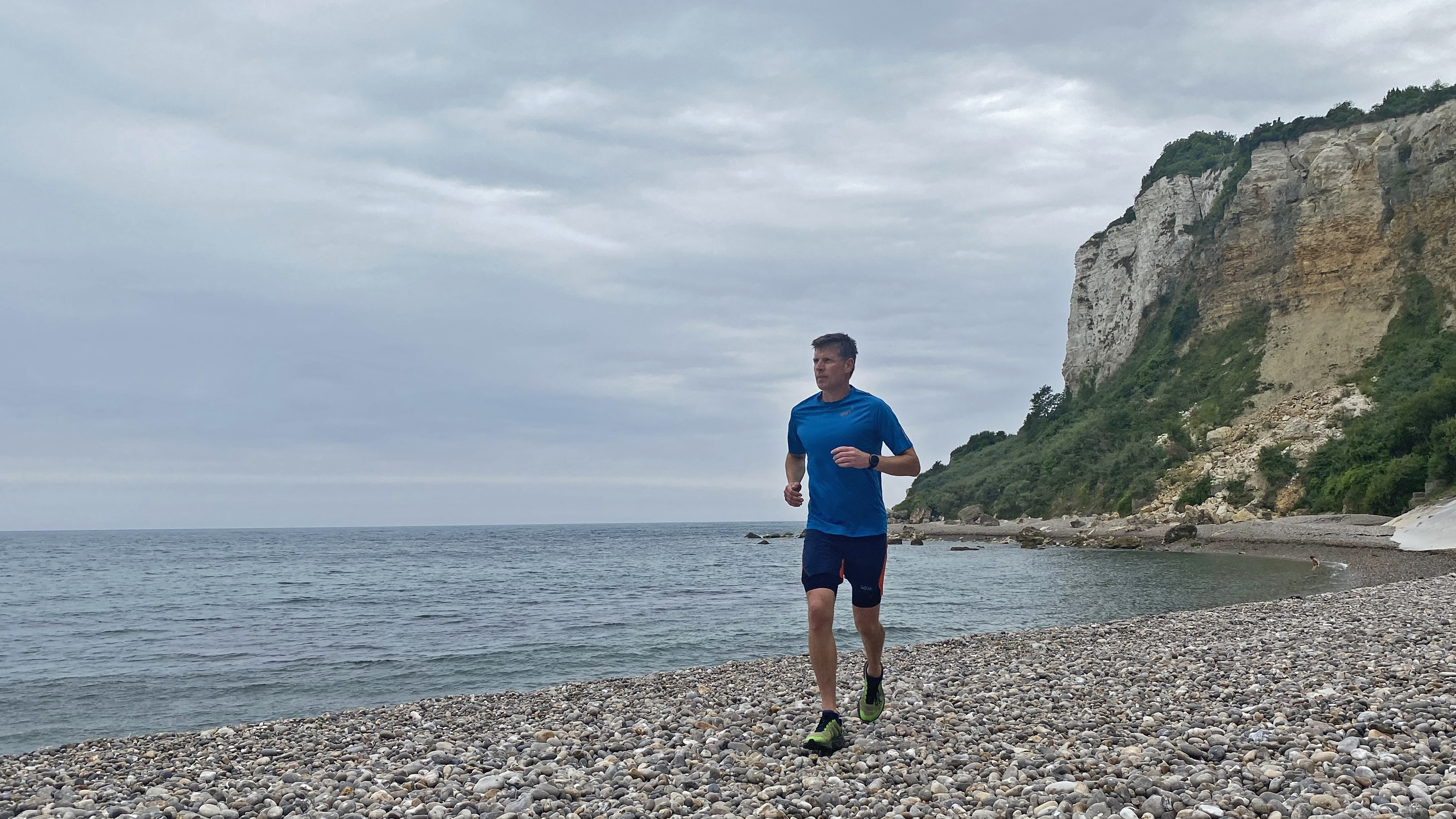
Pat has spent 20 years pursuing adventure stories on both land and sea. En route he’s canoed Canada’s Yukon River and can often be found exploring the English South West Coast by boat, on foot or with an SUP beneath his feet. He’s authored walking guides to Devon and Dorset, and once wrote a whole book about Toilets for Lonely Planet.
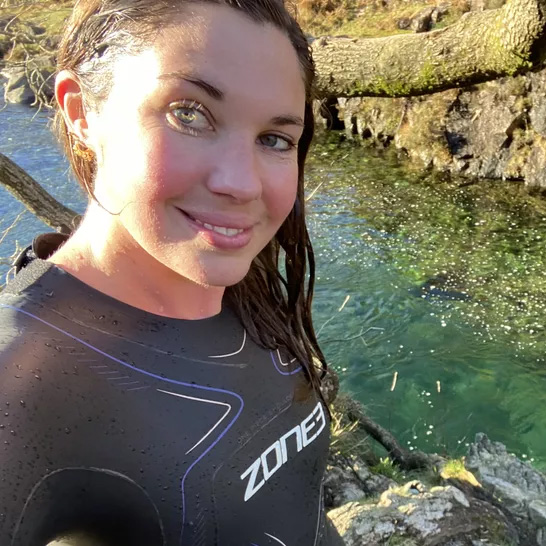
Life as a water loving, wild-swimming adventure-writer has taken Sian around the world, exploring Bolivian jungles, kayaking in Greenland, diving with turtles in Australia and, in Thailand, learning the hard way that peeing on a jellyfish sting doesn’t help. More often than not, she's seeking out a new favorite remote swim, with her wetsuit and water shoes in tow. Her blog, thegirloutdoors.co.uk, champions accessible adventures.
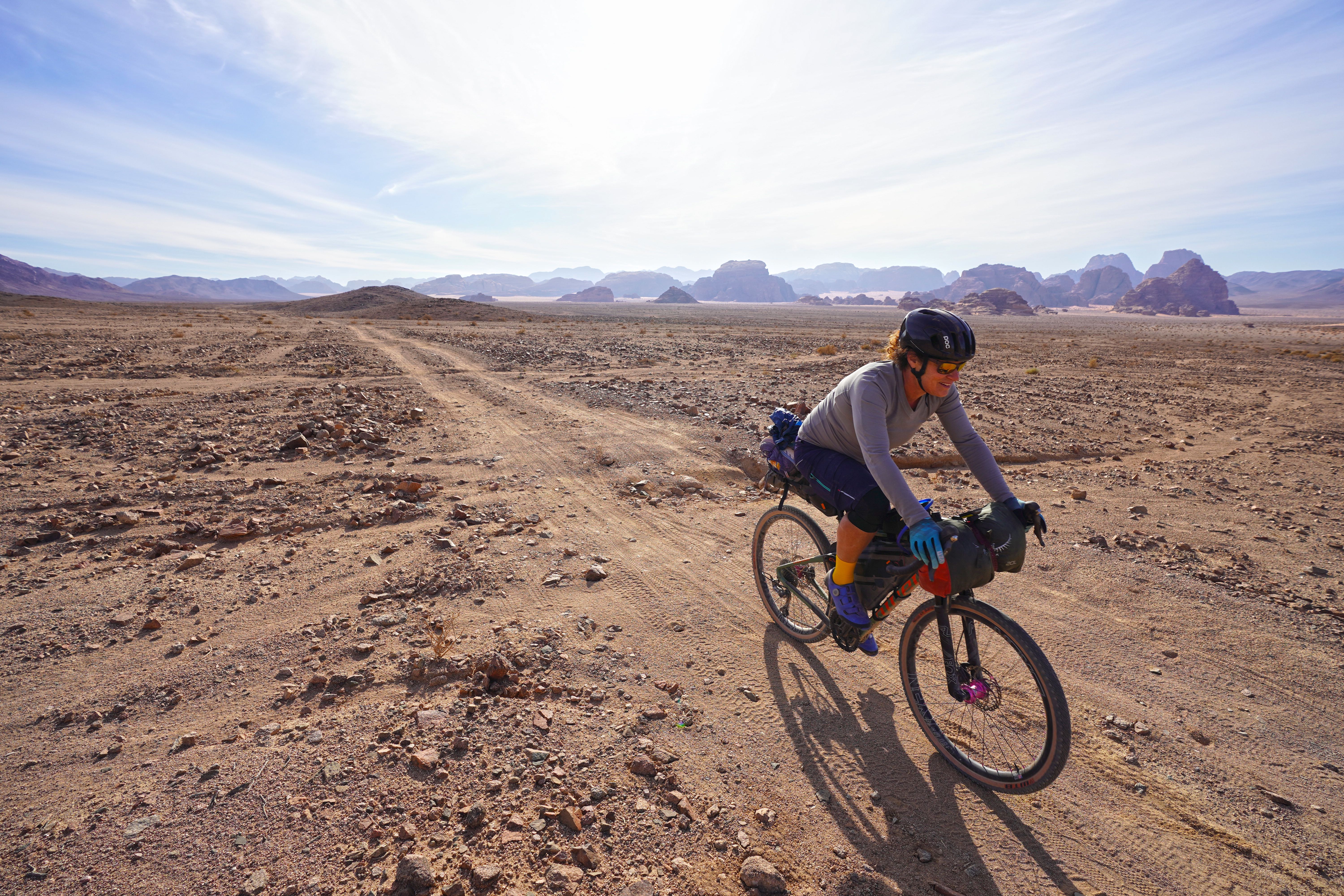
Hardcore, Vermont-based adventurer Berne Broudy knows a thing or two about amphibious adventures and she can often be found scrambling wet rocks with her favorite pair of water shoes. She’s also worked to help brands clean up their materials and manufacturing, and has had guns pulled on her in at least three continents.
How to choose the best water shoes
As you can see, there is quite a degree of variance when it comes to footwear for aquatic adventures, so what are the best water shoes for you? Following are some considerations we’d recommend chewing on before you buy and some frequently asked questions surrounding water shoes.
Water shoe or aquatic sandal?
Our round-up includes two kinds of water-ready footwear – the best water shoes and the best water sandals. The former are snug-fitting pull-on booties designed to be worn only in the water rather than for walking in, and are ideal for swimming and aquatic adventures such as canyoning and coasteering.
Water-friendly sandals (and ‘shandals’ – sandal/shoe hybrids with more coverage than a sandal) are usually designed to be hiked in but can also be worn in water, and this are great for walking near water, river crossings, rockpooling and wearing on holidays where you might be in and out of the water all day. They’re quick-drying but usually heavier than water shoes. If you do want to the best water shoes for deep water, we recommend picking a design with toe protection rather than open toes. Some even double up as great walking shoes or as some of the best trail running shoes.
As a general rule, both water shoes and sandals are flexible enough to squeeze into a 3 to 5-litre dry bag.
Soles
Good grip is essential if you’re planning on wearing your new water shoes or sandals on rocks or wet terrain. Look for a design with a tough rubber sole that has deep ‘lugs’ or indentations that grip the ground as you walk. A solid rubber toe cap is also a good choice for protecting your toes when you’re on rockier ground or when walking immersed in water, such as when coasteering.
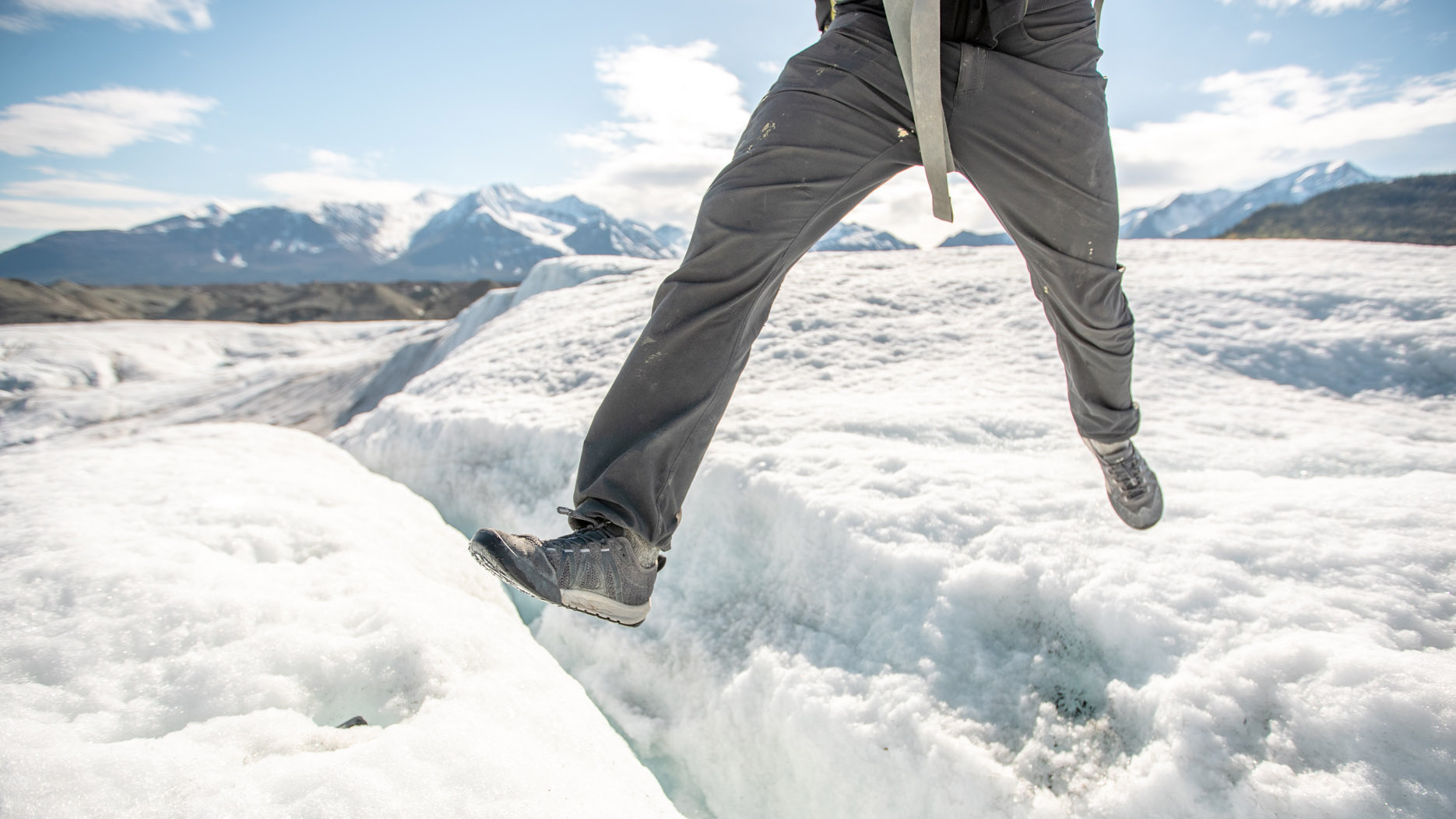
Fit and looks
Your new shoes or sandals may feel more casual than technical hiking boots, but it’s just as important that they fit you well, to help you walk confidently in and around water and to prevent blisters, avoid chafing and stop discomfort if you’re walking in them. Try on your new shoes or sandals and check they fit snugly, and that if they are adjustable that you can strap or bungee them tightly for a stay-put fit.
Make sure there’s no tightness or rubbing, especially around the toes and heels. Hiking sandals come in all kinds of finishes, from smart leather to neoprene, but we recommend picking a fabric or nylon material, as these tend to be tough when walking but quick to dry if you do get them wet. If you’re choosing a water-specific shoe, performance is your only real concern, but if you want a water sandal you can also wear on dry land, it makes sense to pick a style you like the look of, and can wear in town as well as in the great outdoors.
Materials
Fast drying, yet strong and protective materials are best for water shoes.
Neoprene, the standard material used in wetsuits, is common in wetsuit style booties. This synthetic rubber is resistant to temperature changes and, crucially, is totally waterproof.
For more sneaker-like water shoes, synthetic mesh materials make for fast drying pairs that drain effectively but don't let other debris into the shoe. Shoes containing Nylon, polyester, polyurethane, EVA and even PVC all feature in our roundup.
Just like hiking footwear, the outsoles are usually made of one form of rubber or another, to give excellent traction on both wet and dry ground.
FAQs
Find answers to some of the most common questions our experts get asked when it comes to buying water shoes.
Are water shoes a good idea?
If you're someone who spends a lot of time at the beach or enjoys water sports or pursuits like canyoning or coasteering, water shoes are a great idea. Likewise, they make a great additional to your suitcase on summer vacations.
Water shoes are designed to perform better both when wet and when negotiating wet ground than standard footwear. Their outsoles are specifically tailored to give grip on slippery terrain and some pairs are absolutely ideal for wet, rocky scrambles. A standard pair of water shoes will also be constructed from fast drying materials, unlike a decent pair of hiking shoes which, once wet, will likely hold onto the water for some time, particularly if they've got a Gore-Tex membrane (or similar).
What are the best water shoes for running on the beach?
For water shoes that you can run in, choose something that has a shoe shape, complete upper and laces for support. While a water shoe won't be as supportive as a dedicated running shoe, some have midsoles that will do a decent job while giving grip and tow protection. Try the Vivobarefoot Hydra ESC if you enjoy the barefoot feel.
What shoes should you wear to a waterpark?
We've all done it (probably when we were kids). Possessed by the excitement of the wave machine or the swirling slides, we've broke into a run along the poolside concrete at a waterpark. It's not something we'd recommend, as these surfaces can be horrendously slippy and concrete isn't known for its cushioned qualities. Care must be taken even when walking.
Of course, going barefoot is one option. But then, when the midday sun is beating down on said concrete, it can get pretty hot. Plus, no one likes the sharp sensation of stepping on an errant stone.
So, grippy water shoes, shandals and flip flops all make for a great option at a waterpark and, thanks to their fast-drying materials, you can wear them in the water too. Just make sure, whatever you choose, that they're well fastened so you don't lose them on the Lost Canyon ride.
Do people wear water shoes in the pool?
Unlike wild swimming scenarios, there are no spiky rocks or prickly vegetation to contend with at your local pool. So, protection is less of an issue. However, some people choose to wear minimalist water shoes or neoprene socks to shield their feet from chemicals and the like.
Should you size up or down in water shoes?
Water shoes often have a little stretch in their material so, if you're usually in between sizes, it's always worth going down a size. Too big and the shoe won't be snug enough to your foot, which isn't what you want in the water.
All the latest inspiration, tips and guides to help you plan your next Advnture!
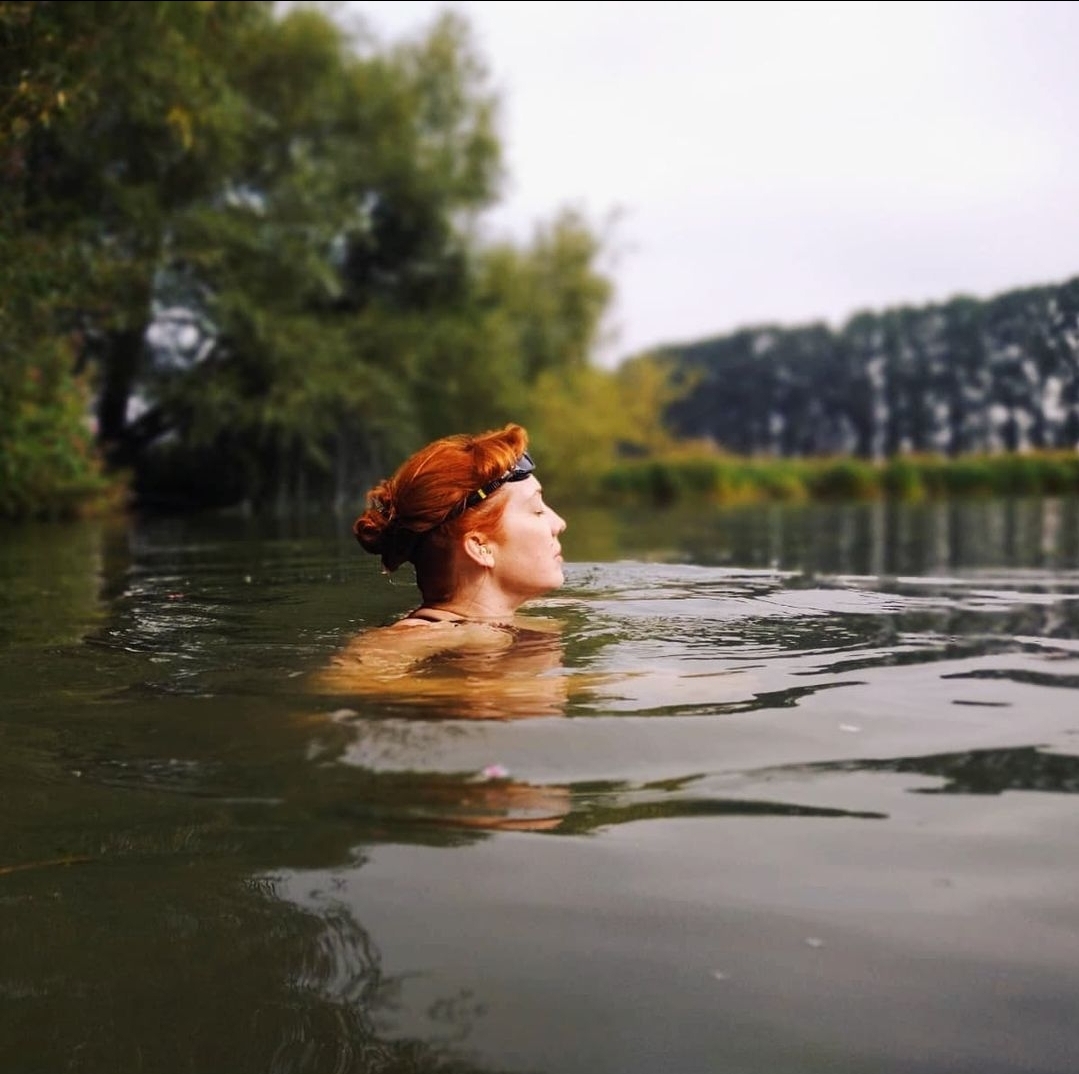
Rosee Woodland developed a taste for adventure at a young age, growing up in a home where camping was the default holiday, and good weather was a vacation bonus rather than a necessity. After bike-packing the length of France in her mid teens with her family, she started to undertake solo forays in her 20s, usually without the benefit of much technical gear at all. Happily, the years she later spent as a mountain biking journalist eventually gave her an appreciation of decent kit! These days she loves a water-based adventure, and is an outdoor swim coach, and a keen free diver. She has a soft spot for Northern Ireland's Mourne mountains, and can also be found hiking and kayaking in Pembrokeshire and the South West of the UK.
- Sian Lewis
- Berne Broudy
- Pat KinsellaAdvnture Consulting Editor
- Charlie LyonAdvnture contributor
